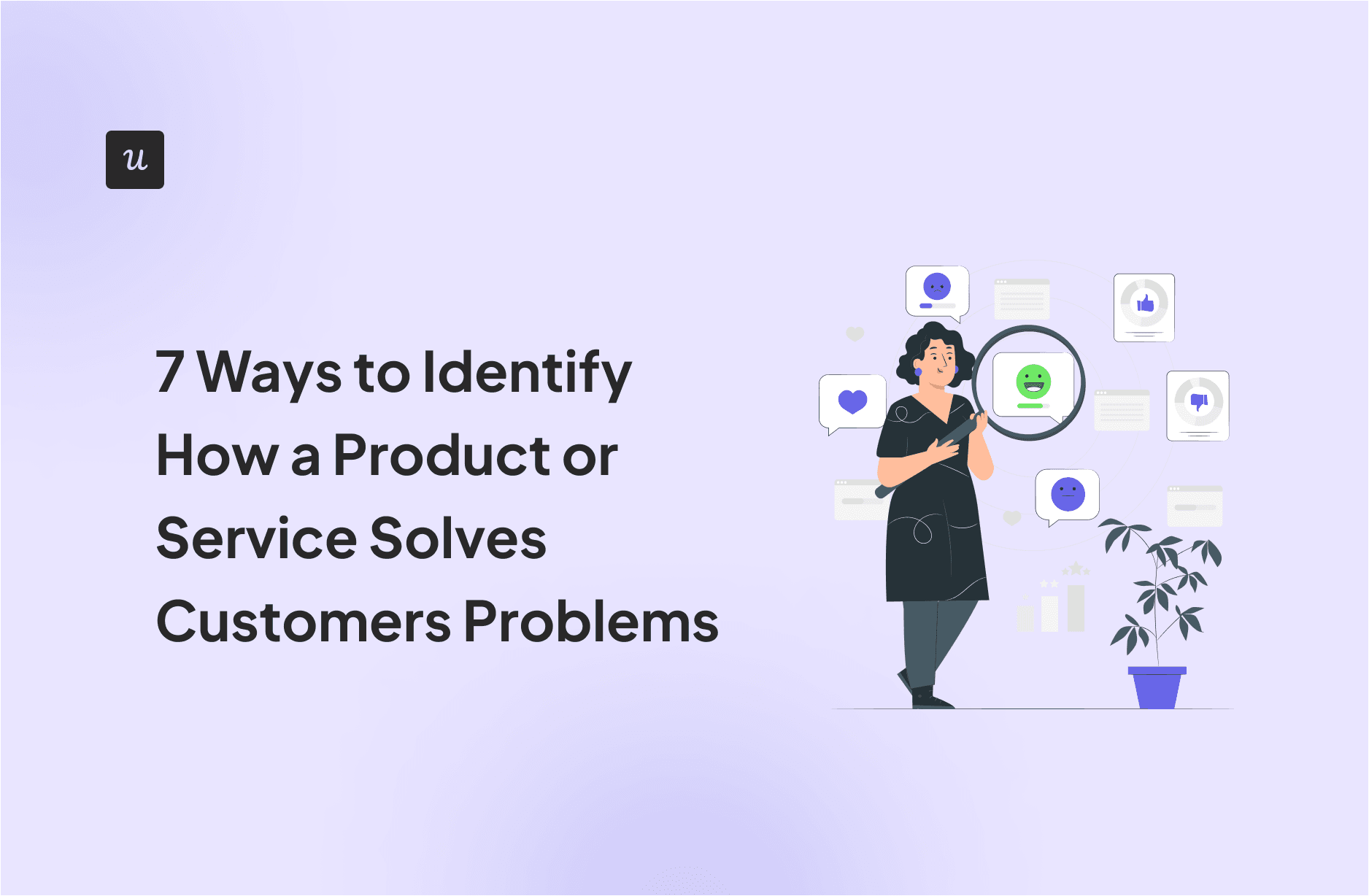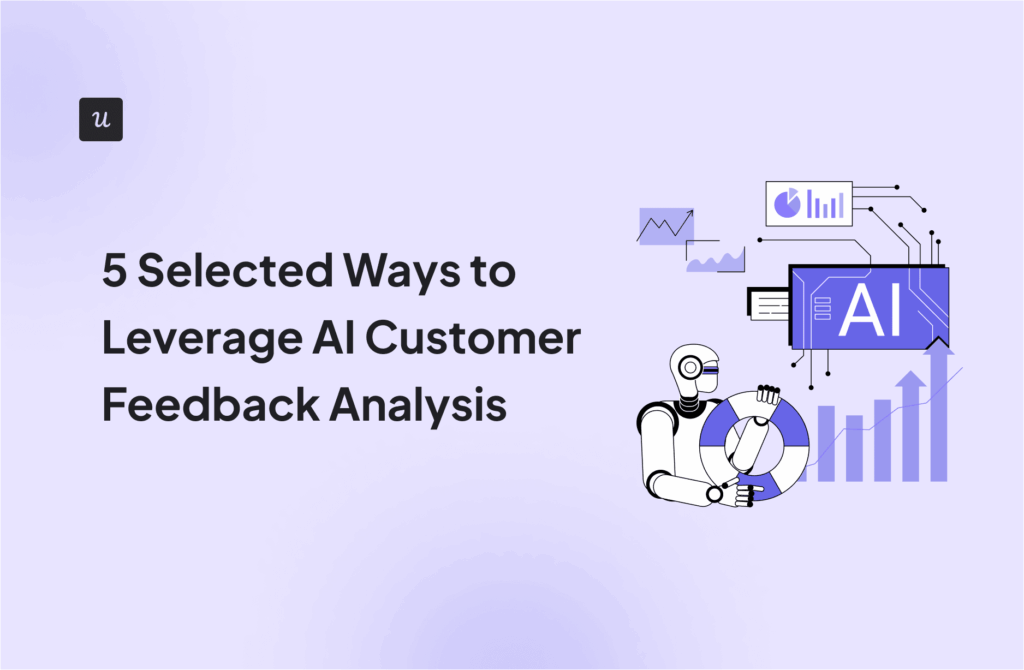
7 Ways to Identify How a Product or Service Solves Customers’ Problems
How do you identify how a product or service solves customers’ problems?
In this article, we share 7 strategies that will help your product team do just that. You will also learn how to tackle your customers’ pain points effectively.
Let’s dive right in!
Try Userpilot Now
See Why 1,000+ Teams Choose Userpilot

Overview of ways to identify how a product or service solves customers’ problems
- To be successful, your product needs to offer a solution to a real problem. Be the painkiller, not a vitamin. Otherwise, there’s a risk it becomes redundant, and customers ditch it.
- To gather qualitative insights on how your product addresses customer pain points, conduct one-on-one interviews.
- Conduct regular and contextual in-app surveys to collect both quantitative and qualitative feedback at scale.
- Examine user behavior and product usage data to identify popular features and areas of friction in the user experience.
- Analyze customer reviews on external platforms to uncover product strengths and weaknesses.
- Leverage insights from customer-facing teams and analyze support communications to understand user sentiment and recurring issues.
- Study rival offerings to compare problem-solving approaches and identify potential gaps in your own product.
- Gather and assess user suggestions while focusing on underlying problems rather than specific feature requests.
- Invest in ongoing customer research to stay abreast of evolving needs and market changes.
- Incorporate user feedback into the development process.
- Create customer journey maps to pinpoint and address pain points at various stages.
- Develop personalized user onboarding processes to educate customers about relevant features and drive their adoption.
- Userpilot is a product growth platform. Book a demo to see how it can help you diagnose customer problems and develop impactful solutions.
Why is it important to solve your customers’ biggest challenges?
Which is more important, painkillers or vitamins?
Of course, painkillers. To succeed, your product needs to be a painkiller. It needs to solve genuine customer problems and bring positive change to customers’ lives. That’s when they’re happy to pay for it, contributing to your revenue and driving growth.
Don’t get me wrong: vitamins have their place too. But as nice-to-haves, they’re the first to be cut from the shopping list when the budget gets tight because their impact isn’t as tangible as that of painkillers.
7 ways to identify how your product solves customer problems
How do you know that your product is the kickass painkiller you want it it be?
Here’s an overview of 7 tactics to implement into your product and customer discovery process.
1. Interview customers to fully understand if their pain point is resolved
Interviews give you a chance to gather qualitative data straight from your customers. They’re flexible, and you can follow up on ideas they bring up.
In your interviews, focus on customer pain points and how your product tackles them. Encourage your customers to share their stories: why they chose the product, how they use it, and how it’s made their lives better.
💡 Pro tip: Use product analytics to identify the most successful product users and invite them to the interview with an in-app message.
2. Trigger surveys to capture customer sentiment at scale
The biggest interview downside? They’re difficult to scale, so if you want to gather lots of feedback, use in-app surveys instead.
There are two approaches here:
- Run regular surveys, say every 3-4 months, to track overall satisfaction trends.
- Trigger contextual surveys to gather targeted feedback from specific users, for example, just after they’ve used the new feature you’re rolling out.
Use them both.
In the survey, include a mix of closed-ended and open-ended questions to capture both quantitative and qualitative insights.
💡 Pro tip: Segment customers based on their feedback and follow up with interviews. Use behavior analytics to understand the reasons for their satisfaction (or dissatisfaction).

3. Analyze product usage data for friction and drop-offs
Analytics can give you various insights about how well the product satisfies users’ needs.
For example, feature usage data can reveal which features users find most valuable and which of them the least.
But don’t pull the plug on the features that customers don’t use just yet. Try to understand why they’re underutilized.
For example, conduct a path analysis to identify friction in the user experience that could be responsible for low feature adoption. And use the insights to optimize the onboarding flows that enable it.
💡 Pro tip: Before you analyze user behavior in depth, use funnel analysis to find the drop-off points.

4. Monitor customer reviews on third-party sites
Customer reviews on third-party sites like G2 or Capterra are another source of feedback on how well your product solves the problem.
And it’s not just about the stars. They give you a general idea of how well you’re doing but don’t really improve your understanding of your product’s strengths and weaknesses.
So roll up your sleeves and dig into the qualitative responses. Look for recurring patterns that shed light on where your product shines and where it’s lacking.
💡 Pro tip: Ploughing through qualitative responses is a pain, so feed them into an AI chatbot, like Claude or ChatGPT, and prompt it to analyze it for patterns.

5. Review customer support interactions
Your sales, marketing, customer service, and customer success colleagues can offer valuable insights into how well your product or service meets customers’ needs.
Why? They interact with your customers and clients daily and have access to lots of anecdotal data. For example, which features customers value and which are lacking in your product.
You can extract additional insights by analyzing their phone call transcripts (use AI again) and support tickets to gauge customer sentiment and identify issues that undermine the positive customer experience.
💡 Pro tip: Compile a monthly voice of the customer report summarizing key themes from support interactions, including top issues, requests, and positive feedback.
6. Analyze competitors to understand their approach to solving problems
Analyzing your competitors’s offerings can reveal a lot about your own product and how well it meets customer demands.
In your competitor analysis, focus on the features they offer and try to identify the problems they solve. Does your product solve the same problems as well?
If yes, how do their solutions compare to yours? If not, is there a better way to solve the problem?
💡 Pro tip: Look for features and solutions that your rivals have copied from you. If your competitors are copying from you, you must be doing something well.
7. Track and evaluate feature requests to identify target market needs
Gathering and analyzing feature requests seems like a no-brainer. If the customers need something, they will tell you, right?
Yes, in many instances, it works. But here’s the catch:
Customers don’t necessarily know what’s the best solution to their problem. More often than not, they ask for features that other products offer. Satisfying such requests will help you achieve feature parity with your competitors but won’t give you the edge.
Solution? Just like with competitor analysis, first understand the nature of the problem and then search for innovative solutions.
And before you do this, make sure the problems are aligned with your product vision. You can’t solve all the problems in the world!
💡 Pro tip: To collect customer requests, use a feedback widget embedded in your resource center.

How to successfully address your customers’ pain points?
Let’s wrap up by looking at 4 strategies that will help you ensure that your product successfully tackles customer problems.
Conduct customer research routinely
Customer research isn’t limited to the early stages of the product development process when you’re looking for a business idea.
Customer needs and the competitive landscape constantly evolve, and you need to stay on top of the shifts, so make it an ongoing process.
Integrate customer feedback into product development
One way to keep tabs on evolving customer needs is by embedding feedback loops in the development process.
Conduct regular surveys, continuously interview customers, and monitor their activity on 3rd party platforms to gauge their satisfaction levels and identify opportunities for improvement.
And then act on the insights.

Map out the customer journey to resolve pain points at various stages
To make sure you address customer pain points consistently, create customer journey maps.
Start by breaking down the customer journey into stages and identify key touchpoints and user actions. For each touchpoint, list the pain points that customers face.
This will give you a clear view of the challenges to address and help you prioritize.

Create onboarding flows to educate customers about your features
No matter how innovative your product is, it won’t solve customer problems if they don’t know how to use the fancy features.
The solution?
Personalized onboarding experiences that help them discover relevant functionality and prompt repeated use until their adoption.
Start with onboarding checklists to activate the core functionality and use interactive walkthroughs to teach them how to use more complex functionality.

Conclusion
Customers who read your blog, attend a webinar or visit your landing page look for products or services that solve specific problems.
Your ability to diagnose those problems and find solutions determines the chances of your product’s long-term success. If you offer them a potent painkiller, the odds are they’ll keep using it. Give them vitamins, and they will ditch you as soon as the novelty wears off or budgets get tight.
If you’d like to see how Userpilot can help you identify customer problems and find solutions, book the demo!








